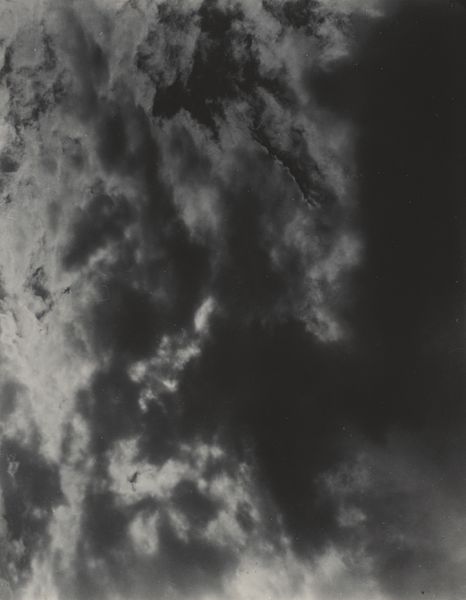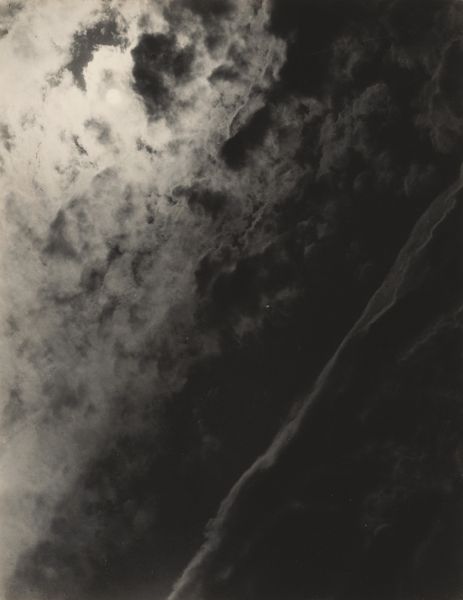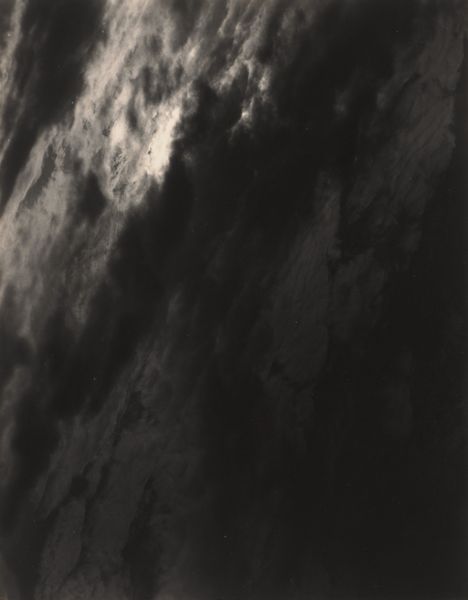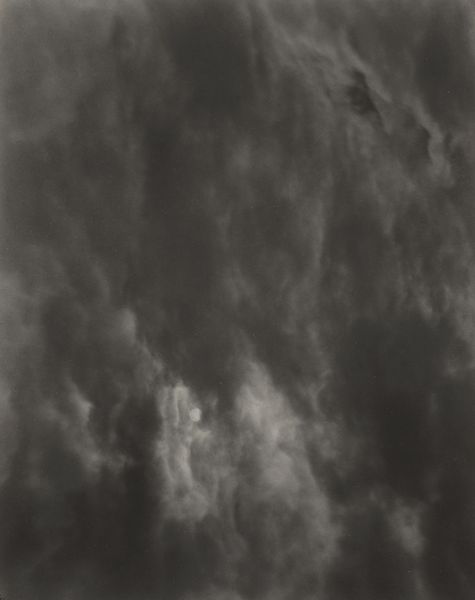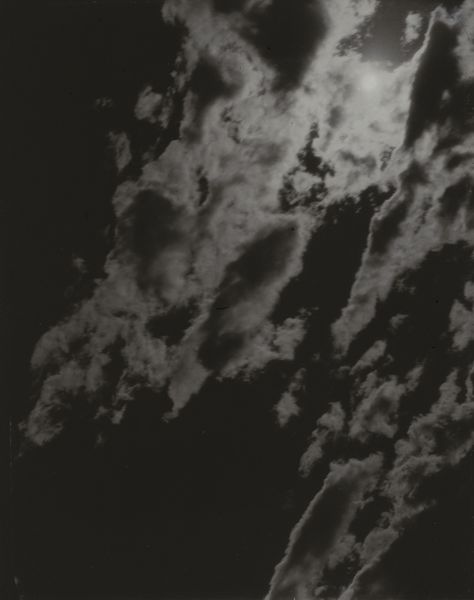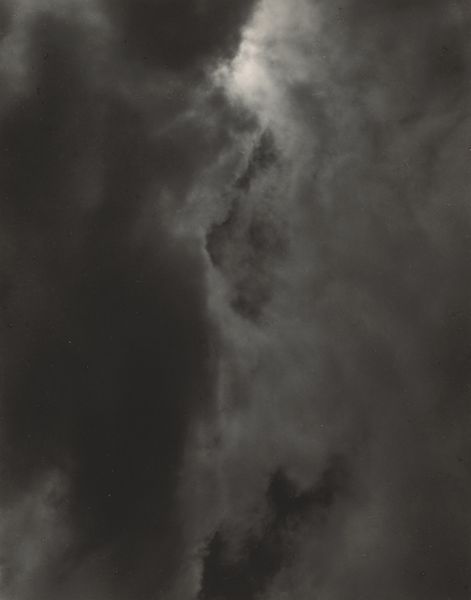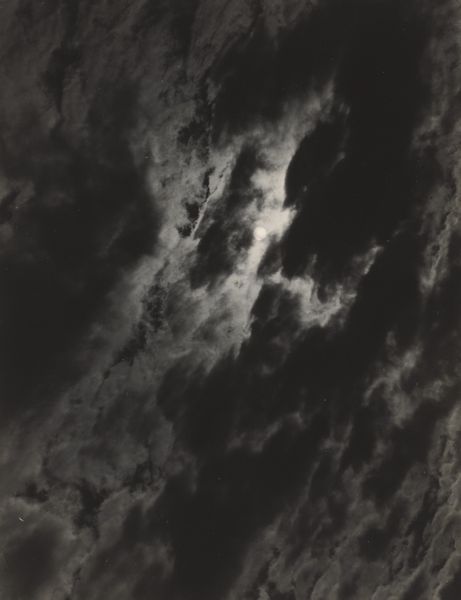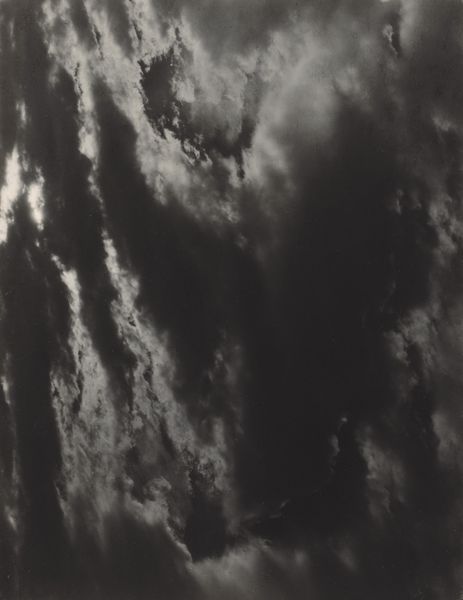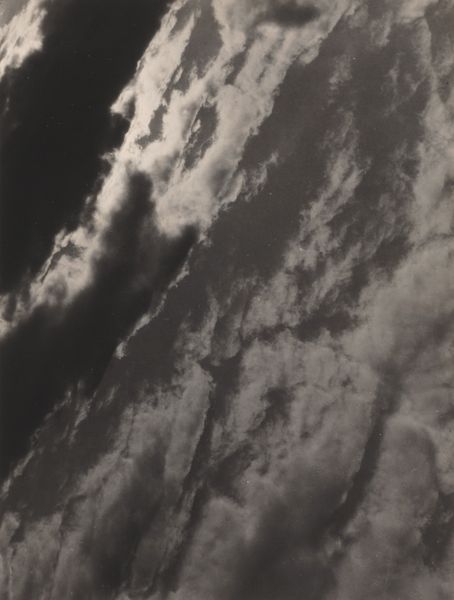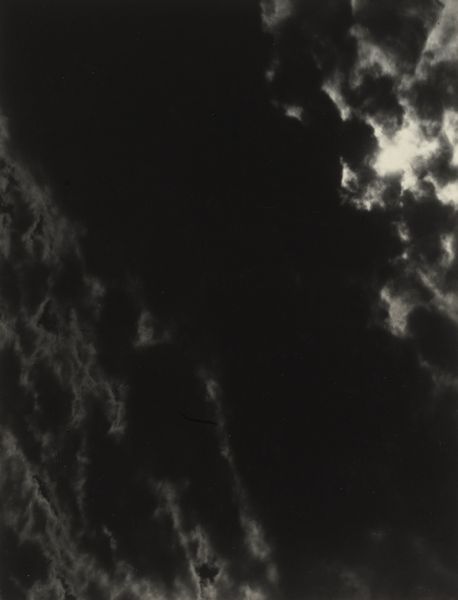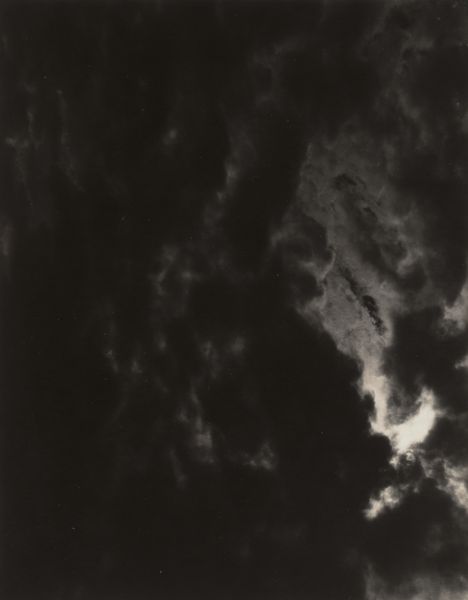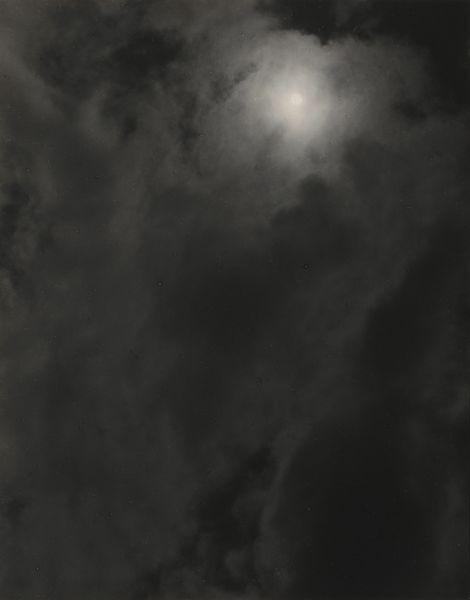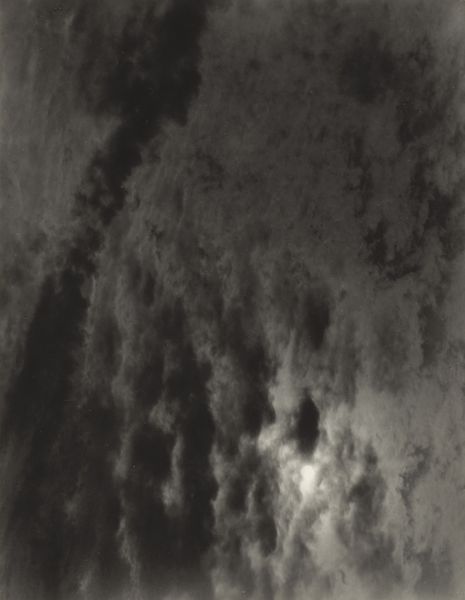
Dimensions: sheet (trimmed to image): 11.8 × 9.2 cm (4 5/8 × 3 5/8 in.) mount: 34.5 × 27.6 cm (13 9/16 × 10 7/8 in.)
Copyright: National Gallery of Art: CC0 1.0
Editor: We’re looking at Alfred Stieglitz's "Songs of the Sky or Equivalent," a gelatin silver print made sometime between 1923 and 1929. It's a striking image of clouds. There’s almost a spiritual feeling evoked by the darks and lights playing against each other. How do you interpret this work? Curator: The “Equivalents” are fascinating because they mark Stieglitz's shift towards abstraction while grappling with representation. The cloud formations are less about the sky itself, and more about the artist’s interior landscape. How does this departure from traditional subject matter challenge established notions of what photography can represent? Editor: It’s interesting to think about it as Stieglitz's internal state. The way he’s captured these shapes feels very emotional and vulnerable. Do you think there is a conversation being had about identity within this work? Curator: Absolutely. This series emerged during a period of immense personal and artistic transition for Stieglitz. The Equivalents became a way for him to explore emotions, ideas, and psychological states through symbolic representation. Consider also how, as a reaction to a society rapidly changing due to industrialization and war, the natural world becomes a site of refuge. How might this search for "equivalence" reflect the anxieties of his time? Editor: That makes me see it differently. The "equivalence" isn't just about matching form to emotion, it's a kind of resistance against the dehumanizing forces of modernity. I had originally seen something simple, but it appears as though I am scratching the surface. Curator: Precisely! By decentering the artwork from recognizable landmarks, do you feel the focus shifted to the viewer's subjective experience of emotional spaces? The piece actively pushes viewers to locate meaning within themselves and society. Editor: I now appreciate how the cloudscape, despite its seeming simplicity, operates as a rich symbol laden with social and historical contexts. I’ll never look at clouds the same way. Curator: And that’s the beauty of art – to encourage continuous questioning and learning of oneself and our shared society.
Comments
No comments
Be the first to comment and join the conversation on the ultimate creative platform.
